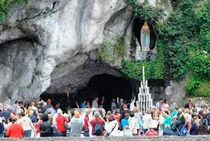The Catholic Defender: Saint Margaret of Scotland’s Story
- Donald Hartley

- Nov 16, 2025
- 3 min read
Updated: Nov 16, 2025
Deepertruth with special permission and aid with Franiciscan Media, a great team for the Lord

Margaret of Scotland was a truly liberated woman in the sense that she was free to be herself.
For her, that meant freedom to love God and serve others.
Not Scottish by birth, Margaret was the daughter of Princess Agatha of Hungary and the Anglo-Saxon Prince Edward Atheling.
She spent much of her youth in the court of her great-uncle, the English king, Edward the Confessor. Her family fled from William the Conqueror and was shipwrecked off the coast of Scotland.
King Malcolm befriended them and was captivated by the beautiful, gracious Margaret. They were married at the castle of Dunfermline in 1070.

Malcolm was good-hearted, but rough and uncultured, as was his country.
Because of Malcolm’s love for Margaret, she was able to soften his temper, polish his manners, and help him become a virtuous king.
He left all domestic affairs to her, and often consulted her in state matters.
Margaret tried to improve her adopted country by promoting the arts and education. For religious reform she encouraged synods and was present for the discussions which tried to correct religious abuses common among priests and laypeople, such as simony, usury, and incestuous marriages. With her husband, she founded several churches.
Margaret was not only a queen, but a mother. She and Malcolm had six sons and two daughters. Margaret personally supervised their religious instruction and other studies.

Although she was very much caught up in the affairs of the household and country, she remained detached from the world. Her private life was austere. She had certain times for prayer and reading Scripture. She ate sparingly and slept little in order to have time for devotions.
She and Malcolm kept two Lents, one before Easter and one before Christmas. During these times she always rose at midnight for Mass. On the way home she would wash the feet of six poor persons and give them alms. She was always surrounded by beggars in public and never refused them.
It is recorded that she never sat down to eat without first feeding nine orphans and 24 adults.
In 1093, King William Rufus made a surprise attack on Alnwick castle. King Malcolm and his oldest son, Edward, were killed. Margaret, already on her deathbed, died four days after her husband.
St. Margaret of Scotland, whom we honor as our patron, was canonized for her concern with and ministry to the poor, the orphaned, the widowed, and the sick.
Margaret founded churches, monasteries and pilgrimage hostels and established the Royal Mausoleum at Dunfermline Abbey with monks from Canterbury. She was especially fond of Scottish saints and instigated the Queen's Ferry over the Forth so that pilgrims could more easily reach the Shrine of St. Andrew.
The best known miracle associated with St Margaret was the preservation of her gospel book which had fallen into a river, and her shrine at Dunfermline was the scene of several miracles of healing.
Abigail eventually became known for miracles she performed involving bees, such as rousing bees out of their hives and using them to chase away evil. Some legends even attested that the bees transformed into soldiers as they chased away evil. St. Abigail is also said to have saved her town from the plague.
In 1250, Pope Innocent IVcanonised her





















Comments